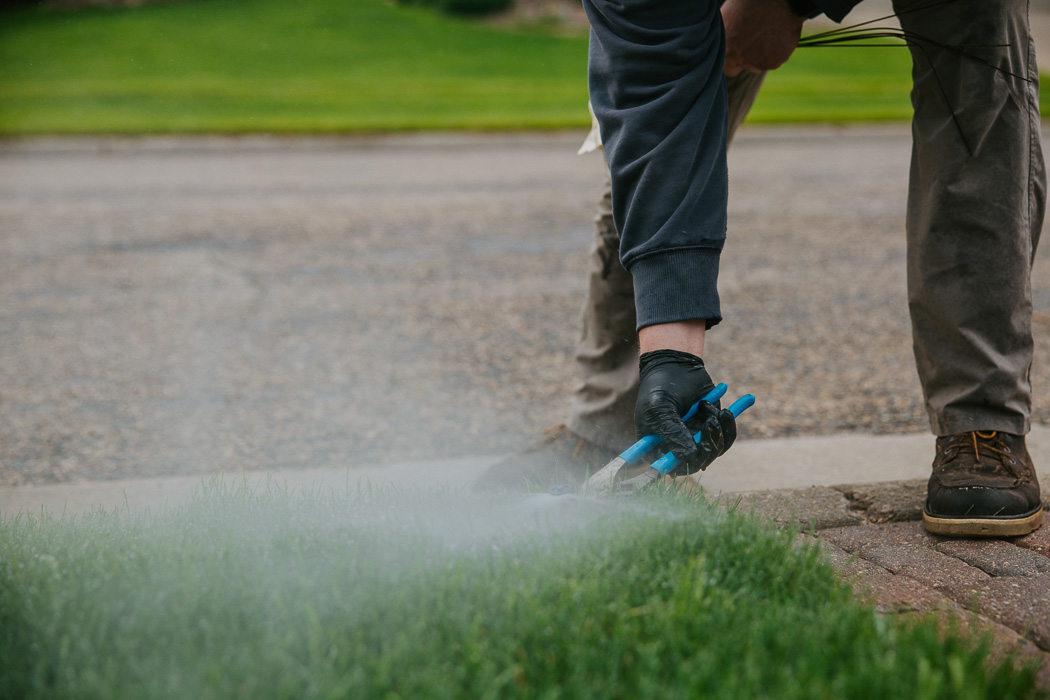Three Methods To Winterize Your Irrigation System
Save your irrigation system and your pocketbook for the spring.
If you have a lawn irrigation system, you need to winterize it before temperatures plunge to the freezing point.
If you do not winterize your irrigation system, you will likely need to repair or replace your irrigation system in the future.
What Is the Risk of Not Winterizing?
Unlike your house, irrigation pipes live below the soil and take on the soil temperature. When Midwest temperatures decide to plunge, the ground also begins to freeze, freezing your irrigation pipes along with it.
As water begins to freeze, it also expands. This expansion can cause your pipes and fittings to burst, ultimately ruining your investment and making it no longer functional.

Winterization Methods
There are three different methods for draining water from your sprinkler or irrigation system:
- manual drain
- automatic drain
- blow-out
The method you use depends on the type of irrigation you have in place.
If you are inexperienced in winterizing your irrigation system yourself, the professionals at Weller Brothers are here to help. Keep in mind that you will not be the only one requesting these services, so plan ahead.
Manual drain method
Some irrigation systems are equipped with manual drainage. These systems allow you to empty excess water from the system by opening a valve.
If you have manual drain irrigation, follow these steps:
- Turn off the water supply to the system.
- Look for the manual valves at the ends and low points of the piping.
- Open all the valves and drain the water from the system.
- Drain the backflow device.
Some irrigation systems are equipped with check valves. These devices allow water to only flow one way. If you have check valves on your system, try raising the sprinkler heads. This allows water to drain out of the sprinkler heads. Once the entire system has been drained, close all the valves.

Automatic Drain Method
An auto drain system has valves that automatically drain water from the pipes. This happens only when the water pressure falls below a certain number of pounds per square inch.
To activate an automatic drain function, follow these steps:
- Turn off the water supply to the system.
- Briefly run one of the sprinkler heads to drop the water pressure.
- Automatic draining will begin, clearing the pipes of excess water.
You may still need to drain the water between the shut-off and backflow device. If the sprinkler heads are equipped with check valves, empty them separately.
Blow-Out Method
The final way of draining an irrigation system is the blow-out method. This is the method that Weller Brothers irrigation specialists use to ensure that your system is shut down properly without risk of damage.
To drain the pipes, you force compressed air through the irrigation system. This discharges excess water through the sprinkler heads. This method can be potentially hazardous and damaging if you do not have a system that can handle the pressure. If you have never blown out an irrigation system before, please consult a professional. This will save you from frustration, possible injury, and repair costs.
Contact Us For Irrigation Winterization in Sioux Falls, Rochester, or Des Moines
Before freezing temperatures hit the Midwest region, it is important to plan ahead.
The irrigation professionals at Weller Brothers in Sioux Falls, SD, Des Moines, IA, and Rochester, MN, have the experience to properly shut down your system for the winter.
